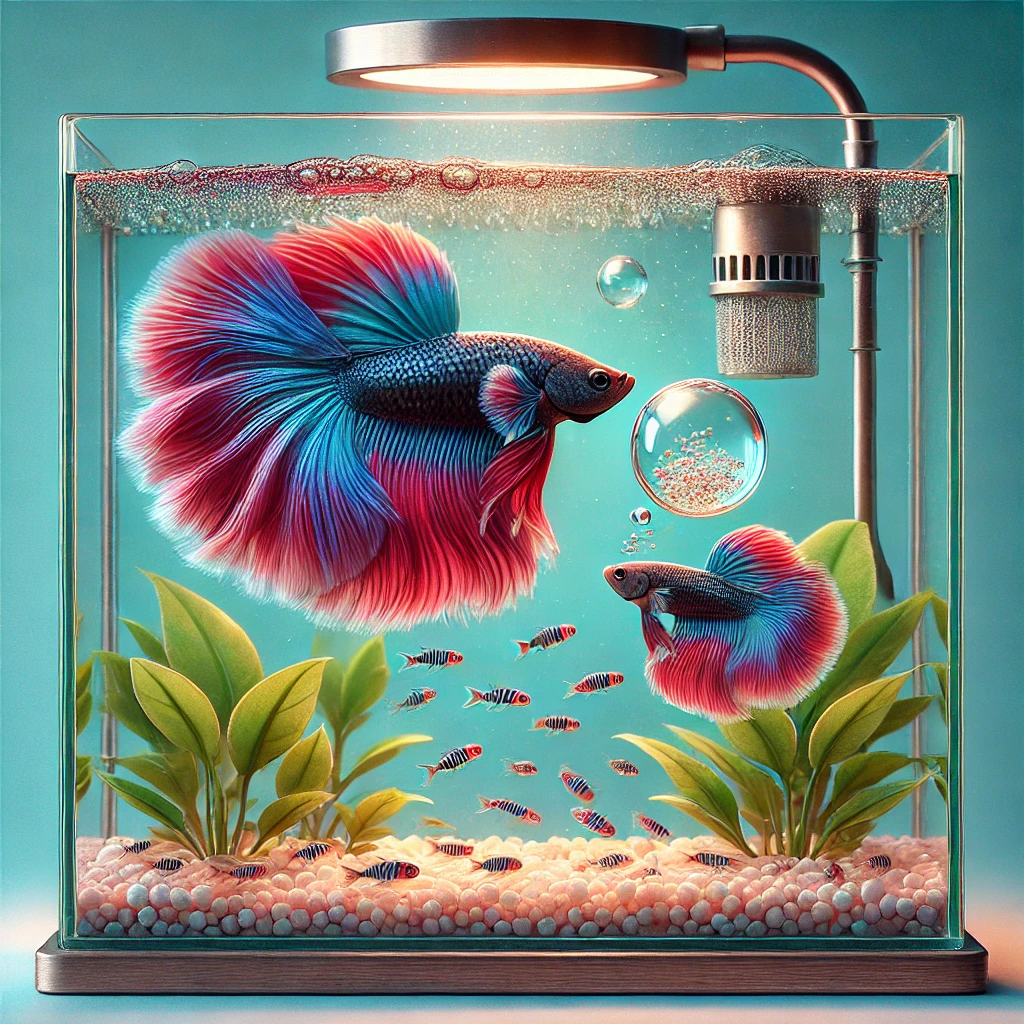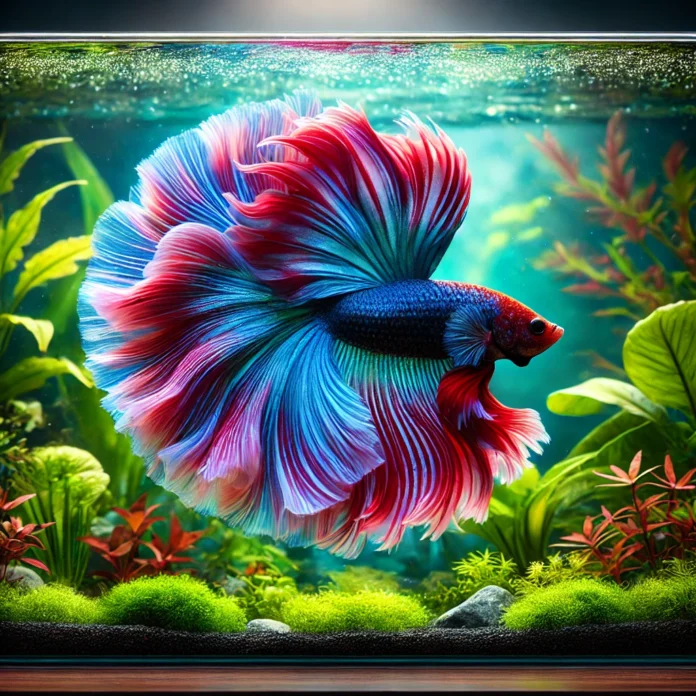If you want to have an amazing aquarium, you can choose the Half Moon Betta Fish. This fish is a visual treat with its bright colors and stunning fins, and it is without a doubt a masterpiece of the aquatic world. Indeed, it is the one-of-a-kind and the longest tail betta variety with the half-moon-shaped tail, which spreads to a 180-degree arc when fully flared, which makes it one of the betta varieties in demand. However, besides being attractive, Half Moon Betta should be given some special type of care in order to retain their sustainable growth. In the present article, we’ll get to the details of this fish, its history, its proper feeding, and the checkup.
What is a Half Moon Betta Fish?
A Half Moon Betta Fish (Betta splendens) is a breed that has been reproductively selected for its lauded and special tail that forms a 180-degree half-circle when in fully flared condition. To be more precise, its tail is swimming in the aspect of a half-moon shape, hence, the fish has such a name. Half Moon Bettas are of various colors, from the few solid ones to the numerous intricate ones.
Origins and Natural Habitat
Betta fish are native to the shallow waters of Thailand, Cambodia, and Vietnam where they are found commonly in rice fields, small rivers, and ponds. Whereas wild ones used to have much shorter fins and subtler colors than the ones we have today, selective mating has led to the creation of the extravagant finned, colorful Half Moon Bettas which we have now.
Caring for a Half Moon Betta Fish
To preserve the health and prosperity of your Half Moon Betta fish, you should ensure that it lives in the right environment and is given the right care.
Tank Size and Setup
- A minimum of a 5-gallon aquarium is recommended to allow enough swimming space for the fish.
- Choose a gentle filter to maintain the water quality without producing strong currents.
- Maintain the water temperature at 26°C-28°C (78-82°F).
- Placing live or silk plants in the tank would help the Half Moon Betta feel more at home by mimicking its natural habitat and creating some hiding places.
Water Conditions
- Keep a pH level of 6.5-7.5.
- Once a week you should exchange 25-30% of the water to avoid ammonia poisoning.
- After that, add a water conditioner to the water to get rid of dangerous chemicals.
Diet and Feeding
Half Moon Bettas are carnivorous creatures and so they need a diet with lots of proteins. A combination of the following should be fed to them:
- Betta pellets of exceptional quality
- Your half moon requires you to feed him/her a great diet of frozen and live foods such as bloodworms and brine shrimp.
- Offer extra nutrients through the occasional treats of daphnia to keep them healthy and vibrant all the time.

Overfeeding should be avoided as it can lead to fouled water and present health problems. The feeding regimen should consist of small-sized portions that should be given twice a day.
Read Also: Adelor Ai Tool
Common Health Issues and How to Prevent Them
Half Moon Betta Fish can suffer from fin rot, swim bladder disease, and ich (white spot disease), often due to poor water conditions or improper feeding. Keeping the tank clean, maintaining stable water parameters, and providing a balanced diet can help prevent these issues.
Fin Rot
- Fish’s fins can also contract this disease as a result of either the unclean water they swim in or bacterial infections.
- Avoid giving it to your pet fish by allowing the water in their tank to stay clean and at the same time, by avoiding particular decor that is too sharp.
Swim Bladder Disease
- Why even stress about the food when the fish skips a meal or faces flatulence if you can eat in a proper fashion?
- Do not use feed as a substitute for the required nutrients by giving an unbalanced diet. Also, be sure that overfeeding doesn’t occur.
Ich (White Spot Disease)
- These small dots can appear on the body and fins of your fish.
- You can treat it by putting some aquarium salt into the fish’s environment, or you can use medication instead. Both methods require maintaining the water conditions constant.
Breeding Half Moon Betta Fish
Breeding HalfMoon Bettas needs a certain amount of experience and a lot of patience. Here are some important steps:
- Firstly, to create an exclusive space for breeding, the first requirement will be to set up a separate tank that you can control the temperature with a heater and also add filtration that is gentle to the touch.
- The male and female should be put together in a way that is not harmful to one another since the bettas might become aggressive.
- One of the main signs you should watch for during this time is bubble nests. A betta fish’s nuptials are signaled by bubble nests which they build.
- Remove the female from the male after spawning to avoid aggression and also to protect the female from being harmed.
- Care for the fry (baby fish) first by feeding them infusoria or baby brine shrimp.

Wrapping Up
Betta Fish is a sight for sore eyes when placed in a beautiful aquarium, but they, the little ones, still need to be looked after by the person who owns them as a part of his/her responsibility. The best preparation for the breeding of perfectly radiant and even delightfully bright oscars is the right selection of the tank, feeding, and ensuring a balanced diet, as well.
Are you thinking of getting a Half Moon Betta? Let us know in the comments!
Read Also: Cleaning Aquarium With Vinegar


